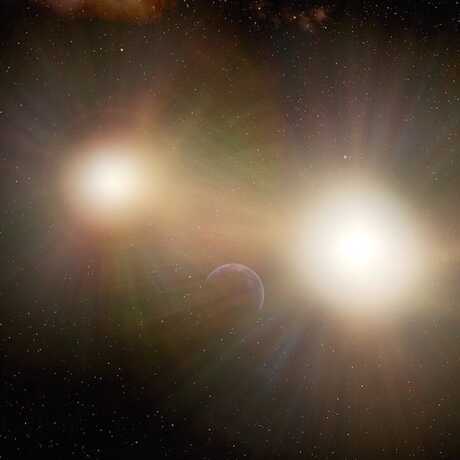Universe Update
Exoplanets, Say Cheese!

Next Monday, we’re delighted to host Bruce Macintosh of Stanford University as part of our Benjamin Dean Astronomy Lecture Series. Macintosh is the principal investigator of a remarkable instrument called the Gemini Planet Imager (or “GPI,” pronounced “gee-pie” for short). The “Gemini” part of the name refers to the Gemini Observatory, where the instrument is installed and has been making observations for nearly four years. The “Planet Imager” part of the name describes its primary task: to image exoplanets in orbit around stars other than the Sun.
As Macintosh describes the instrument, “GPI is designed specifically to look at planets orbiting other stars by blocking out the light of the incredibly bright star and letting you see the tiny, faint planet 100,000 [to] a million times fainter, located right next to it. By doing that, we can study giant planets the size of Jupiter, in the outer parts of other solar systems and see what they’re made out of, measure their composition, their temperature, get some idea of where they came from and what they’re going to do.”
As you may know, astronomers have found more than 3,700 planets in orbit around other stars, using a variety of techniques. Well over half of these were discovered by the Kepler spacecraft, which has given us a sense of the variety of planets that exist—everything from so-called hot Jupiters to mini-Neptunes to super-Earths. But all these planets are relatively “mature” objects that have settled into humdrum lives around their parent stars. Direct imaging of exoplanets (the technique exploited by GPI) offers the opportunity to study planetary formation in its early stages.
“The trick we use to see these planets is, we look for them when they’re young,” he says. “When a planet like Jupiter formed, a lot of energy is released and so it’s hot. It has a temperature of thousands of degrees when it’s only a few million years old. By targeting stars whose planets we think are only a few million years old, we can see these hot glowing planets at infrared wavelengths and use that to measure what they’re made out of. We couldn’t see a mature solar system like our own. We could see the young equivalent of our solar system—our solar system right around the time that the Earth itself was being formed.”
Pretty spiffy! But Macintosh’s work (and Monday’s talk) extends far beyond this single instrument on an Earth-bound telescope. Exoplanet science relies on a network of spectacular, cutting-edge technology to learn more about these fascinating worlds, and more tools—both on Earth and in space—are coming online all the time, to address a wide range of challenges.
As mentioned above, Kepler has found many super-Earths, but most of them lie hundreds or even thousands of light years away. “A new NASA mission called TESS, the Transiting Exoplanet Survey Satellite,” Macintosh explains, “is going to do the same thing Kepler did but it’s going to do it close to the Earth and it should find, we hope, a couple of hundred of these super Earths but now within 30 or 50 light years of Earth…” Once TESS has found these exoplanets, astronomers can follow up with observations by the James Webb Space Telescope and other future missions.
“I’m involved with the science planning for a NASA mission called WFIRST, the Wide Field Infrared Survey Telescope, [which] will have the ability to do the direct imaging of planets. It can block out stars and from space, without the turbulence of the Earth’s atmosphere—and that way it can see mature planets like our own. Probably not quite something as small as the Earth but it could easily see these Kepler super-Earths around nearby stars, measure their spectrum and answer the question of what they’re made out of whether they’re planets that are the big end of something that could be habitable or the small end of the giant planets like Neptune,” Macintosh describes.
“The Holy Grail, the ultimate goal of this field is [finding] something like the Earth. Right now, we have a picture of HR8799,” he says, comparing future work to one of the first systems imaged directly, long before GPI came online. “There’s four little glowing red blobs that are giant planets. Someday, we want to do the same thing with a planet the size of the Earth, which would be 100,000 times fainter than the HR8799 planets and much, much closer to the star. That’ll probably take an entire space telescope built only to study exoplanets and maybe things like a huge star shade or space umbrella that blocks out the light of the star so you can see the planet next to it. If it happens and we could get the spectrum, we could see if there’s oxygen on a planet like that. Maybe even see if there’s chlorophyll. Understand if there’s life around planets other than our own.
“I think it’s possible. I think we can build the technology that would let us see planets like that. Whether the Universe has provided planets like that is the question we don’t know the answer to and that’s why we need to build these experiments and try to find out.”
If you’re interested in hearing more about the emerging pictures of distant worlds, please join us in Morrison Planetarium on Monday, August 13, at 7:30 p.m. Or check out our iTunes podcast later this year for a recording of Macintosh’s talk!


